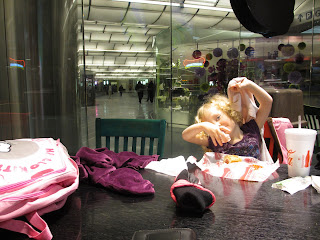Logical arguments:
Secret ballots protect individuals from coercion and peer pressure, encouraging honest voting. They uphold democratic principles by ensuring that each member's vote is confidential and free from manipulation or retaliation.In a bid to protect workers' rights, labor unions can lead to the creation of many bureaucratic rules and regulations, potentially slowing down processes and leading to inefficiency.Labor unions can discourage high performance. Since promotions and raises are often based on seniority rather than merit, there can be little incentive for workers to exceed expectations.
Supporting evidence (data, studies):
- A 2019 study by Alexander Hertel-Fernandez, published in the American Journal of Political Science, suggests secret ballots can enhance political efficacy and promote civic engagement.
- Study by Hirsch (2004) shows that in heavily unionized industries, productivity can be lower due to more rigid work rules.
Supporting books:
- "The Secret Ballot and Democracy: The Case for Abolition" by Carl Watner
- "Democracy and the Secret Ballot in America" by Richard Franklin Bensel
- "The Right to Work: Its Meaning and Value" by Edwin Vieira Jr.
Supporting videos (movies, YouTube, TikTok):
- Numerous TED Talks and educational videos explain the importance of secret ballots in maintaining democratic processes. For instance, "The Secret Ballot: A Voting Method to Ensure Confidentiality" by Michael Munger.
- "The Problem with Labor Unions" by Learn Liberty on YouTube
Supporting organizations and their Websites:
- The Heritage Foundation (https://www.heritage.org/) has written extensively on the importance of secret ballots in union elections.
- National Right to Work Legal Defense Foundation
Supporting podcasts:
- Podcasts like "Unions 101" by the National Right to Work Legal Defense Foundation discuss the role of secret ballots in unions.
- "Freakonomics Radio" has several episodes discussing the impact of labor unions.
Unbiased experts:
- Richard Epstein, a professor of law at New York University, has argued for secret ballots in union elections.
Benefits of belief acceptance (Maslow categories):
- Security: Secret ballots protect union members from potential retaliation or coercion.
- Esteem: Encourages an atmosphere of respect for individual opinions.
- Self-actualization: Fosters an environment that values individual's beliefs and encourages their participation in union governance.
- Economic (Maslow's Safety needs): Unions can lead to increased labor costs, which could potentially impact the economy negatively.
- Richard B. Freeman, Harvard University
- David Macpherson, Trinity University
Ethics that should be used to justify this belief:
- Democratic principles: Secret ballots are fundamental to democratic societies and allow for a fair and free election.
- Confidentiality: Ensures the privacy of individuals' political preferences.
- Non-maleficence: Protects individuals from potential harm, such as coercion or retaliation.
- Libertarian ethics: Supports the idea that people should have the right to negotiate their own work contracts without union interference.
a) Fundamental beliefs or principles one must reject to also reject this belief:
- Democracy: Rejecting this belief might mean not valuing a cornerstone of democratic societies - free, fair, and secret voting.
- Privacy: One might not see the significance of maintaining confidentiality in voting decisions.
- Protection from coercion: If one doesn't believe in the potential of coercion or peer pressure in voting, they might reject this belief.
b) Alternate expressions of this belief (e.g., metatags, mottos, hashtags):
- #SecretBallots
- "Confidential voting is essential voting"
- "Free, fair, and secret"
c) Criteria to demonstrate the strength or weakness of this belief:
- Strength: Can be demonstrated through examples where secret ballots led to fair voting, free of coercion.
- Weakness: Instances where the confidentiality of secret ballots was compromised or didn't affect the outcome.
d) Shared interests or values with potential dissenters that could promote dialogue and evidence-based understanding:
- All parties likely agree on the importance of fair elections, even if they differ on the means. This shared value can be used to promote dialogue.
e) Key differences or obstacles between agreeing and disagreeing parties that need addressing for mutual understanding:
- Those opposed might argue that secret ballots lead to disengagement or less accountability. This is a concern that needs addressing and discussion.
f) Strategies for encouraging dialogue, respect, and using tools to gauge the evidence in this debate:
- Hosting open forums where both sides can present their perspectives.
- Comparing case studies and research on union elections that did and did not use secret ballots.
- Emphasizing respectful dialogue and the importance of understanding differing views.
g) Educational resources:
- "The Right to Vote: The Contested History of Democracy in the United States" by Alexander Keyssar
- "Why Secret Balloting Matters" by National Right to Work Legal Defense Foundation
- "Union Democracy: The Internal Politics of the International Typographical Union" by Seymour Martin Lipset
- "Unions and Democracy" article in The American Prospect.
Visit the following links for more resources and participation:
Group Intel and Idea Stock Exchange.

.JPG)















